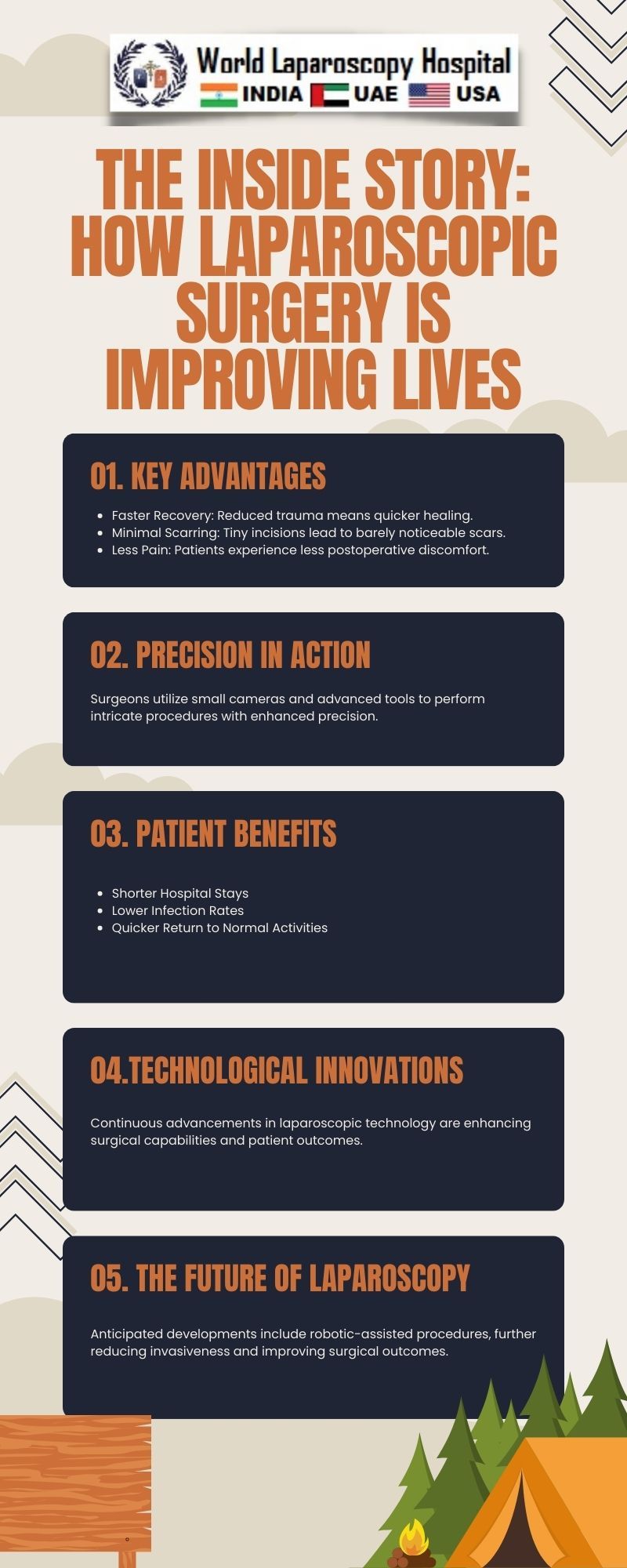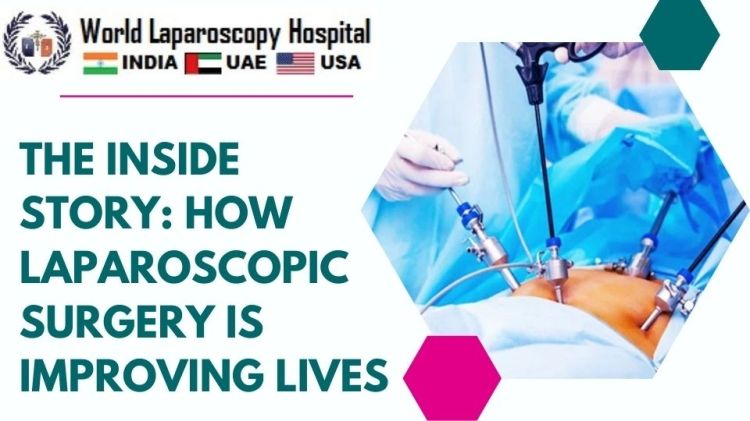Introduction
In the realm of modern medicine, laparoscopic surgery has emerged as a groundbreaking technique, significantly altering the landscape of surgical procedures and patient care. Unlike traditional open surgeries, laparoscopic surgery involves making small incisions through which a camera and specialized instruments are inserted. The benefits of this minimally invasive approach are far-reaching, revolutionizing healthcare and improving the lives of countless individuals. This article delves into the multifaceted aspects of laparoscopic surgery, examining its history, techniques, applications, and the profound impact it has on patients.

A Glimpse into the History of Laparoscopic Surgery
The roots of laparoscopic surgery can be traced back to the early 20th century, with intermittent developments over the decades. However, it wasn't until the late 20th century that technological advancements paved the way for widespread adoption. In the 1980s, the introduction of high-quality cameras and fiber optics allowed surgeons to visualize the internal organs with unprecedented clarity. This breakthrough laid the foundation for the evolution of laparoscopic techniques.
The Techniques Behind Laparoscopic Surgery
Laparoscopic surgery involves a meticulous process that requires both skill and precision. Surgeons make small incisions, typically ranging from 0.5 to 1.5 centimeters, through which a trocar is inserted. Carbon dioxide gas is then pumped into the abdominal cavity to create a workspace and facilitate a clearer view. A laparoscope, a thin tube with a light and camera, is introduced to transmit real-time images to a monitor, guiding the surgeon throughout the procedure.
Specialized instruments designed for minimal invasiveness are utilized, allowing surgeons to manipulate tissues and organs with precision. Advancements in robotics have further enhanced laparoscopic procedures, providing surgeons with robotic-assisted systems that offer increased dexterity and control.
Applications Across Medical Specialties
Laparoscopic surgery has transcended traditional boundaries, finding applications across various medical specialties. In the field of general surgery, procedures such as appendectomies, gallbladder removals, and hernia repairs have become routine through laparoscopic approaches. Gynecological surgeries, including hysterectomies and ovarian procedures, benefit from reduced scarring and quicker recovery times.
Furthermore, laparoscopic techniques have permeated urological and colorectal surgeries, offering patients less pain, reduced blood loss, and shorter hospital stays. In the hands of skilled practitioners, laparoscopic surgery has proven effective for treating conditions ranging from gastrointestinal disorders to certain cancers.
The Advantages of Laparoscopic Surgery
The shift towards laparoscopic surgery is driven by a multitude of advantages, both for patients and the healthcare system as a whole. One of the most notable benefits is the minimization of trauma to the body. Traditional open surgeries often involve large incisions, leading to prolonged recovery times and increased pain. In contrast, laparoscopic procedures result in smaller scars, less postoperative pain, and a faster return to normal activities.
The reduced risk of infection is another critical advantage. Smaller incisions decrease the exposure of internal organs to external contaminants, lowering the likelihood of postoperative infections. Additionally, the shorter hospital stays associated with laparoscopic surgery contribute to cost-effectiveness and the efficient use of healthcare resources.
Patient-Centric Outcomes
Perhaps the most compelling aspect of laparoscopic surgery is its positive impact on patient outcomes. Studies have consistently demonstrated that patients undergoing laparoscopic procedures experience less pain and discomfort, leading to improved postoperative quality of life. The quicker return to regular activities is especially significant, allowing individuals to resume their daily routines and responsibilities sooner than with traditional surgeries.
Furthermore, the cosmetic aspect cannot be overlooked. Smaller scars are not only physically less imposing but also contribute to better emotional well-being for patients. This psychological benefit is a crucial component of the overall patient experience, fostering a more positive outlook during the recovery process.
Challenges and Considerations
While laparoscopic surgery has undoubtedly transformed the landscape of modern healthcare, it is not without its challenges and considerations. The learning curve for surgeons transitioning from traditional to laparoscopic techniques is one such hurdle. The skills required for laparoscopic procedures, including hand-eye coordination and spatial awareness, may take time to develop.
Moreover, the cost of acquiring and maintaining laparoscopic equipment can be a significant investment for healthcare institutions. However, proponents argue that the long-term benefits, such as reduced hospital stays and improved patient outcomes, justify these initial costs.
In certain cases, patient eligibility for laparoscopic procedures may be limited by factors such as obesity or previous abdominal surgeries. Additionally, not all medical conditions are conducive to laparoscopic intervention, and some cases may still require traditional open surgeries.
Future Trends and Innovations
As technology continues to advance, the future of laparoscopic surgery holds exciting possibilities. Ongoing research explores the integration of artificial intelligence (AI) to enhance surgical precision and outcomes. AI algorithms may assist surgeons in real-time decision-making, optimizing procedures and reducing the risk of complications.
Furthermore, the evolution of robotic-assisted laparoscopic surgery is anticipated to play a pivotal role. Robotic systems, equipped with advanced sensors and improved robotic arms, offer the potential for even greater precision and expanded applications. These innovations are poised to redefine the boundaries of what is achievable through minimally invasive techniques.
Conclusion
Laparoscopic surgery stands as a testament to the relentless pursuit of innovation in the medical field. Its transformative impact on patient care, recovery times, and overall healthcare efficiency is undeniable. As the medical community continues to embrace and refine laparoscopic techniques, the future holds promise for further advancements that will undoubtedly continue to improve and save lives. The inside story of laparoscopic surgery is one of continuous evolution, with each chapter bringing new insights, innovations, and, most importantly, hope for a healthier future.






